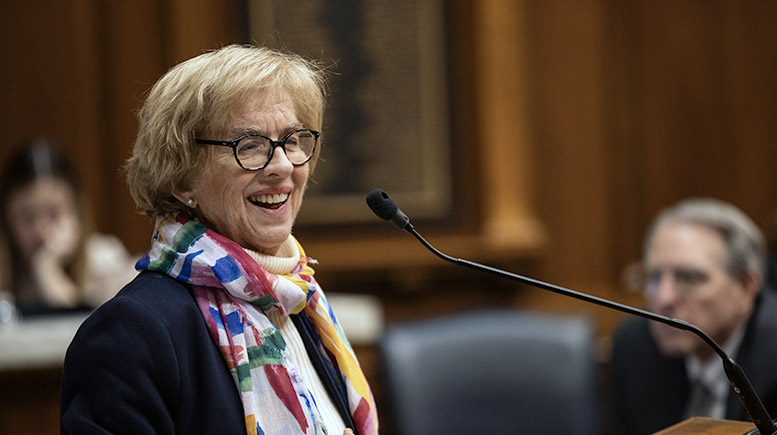By State Representative Sue Errington—
INDIANAPOLIS—Indiana is severely lacking in accessible, affordable child care options. Brighter Futures Indiana’s Data Center indicates that over 502,000 children in Indiana may be in need of child care. Despite the sheer amount of children needing service, providers can only meet 41% of this demand, leaving many parents scrambling to find facilities to accommodate their children.
This issue is especially present in rural communities where child care deserts persist. In Delaware County, four county subdivisions have no child care options at all, according to the Center for American Progress. Even for those in Delaware County who do have access to child care in their area, the cost of sending a child to these providers can be prohibitive. Data from the Indiana Youth Institute shows that 21.8% of children in Delaware County live in poverty. Yet, the child care cost-to-income ratio is 12.1%, indicating that households must spend a large chunk of their individual incomes to cover the cost of child care.
Hoosier parents are struggling, which is exactly why I voted in support of Senate Enrolled Act 2 this past session, which will begin to take effect this summer. This law will assist low-income households in accessing safe and affordable child care. The law provides that full-time child care workers and trainees will automatically qualify for financial assistance to cover child care costs for their children. Alternatively, child care employees can enroll their four-year-old into a pre-K program. This is a welcome change, as current law restricts financial assistance through the Child Care Assistance Fund and On My Way Pre-K program to families on a low-income.
Additionally, this law will assist Hoosiers in rural communities by executing a pilot program supervised by the Family and Social Services Administration. This law required the establishment of at least three micro facilities in areas facing a child care shortage. These micro facilities are slated to serve between three and 30 children.
Another initiative that will go live later this year is an online dashboard by the FSSA. The website will include monthly updates providing parents with information on state and federal child care subsidies available to Indiana residents.
The number of Indiana providers is exceptionally low given the amount of children who need care. It is crucial that we support those who take on this difficult profession. Incentives, such as providing child care for workers’ children, and the creation of new care facilities in existing child care deserts are instrumental in not only helping our Hoosier parents, but also encouraging more Hoosiers to enter into the profession.
With these new changes to Indiana’s current law, I am hopeful that we can boost the number of child care workers in Delaware County and throughout the state. With these new incentives, we are able to provide much needed relief to both child care workers and parents in child care deserts.



